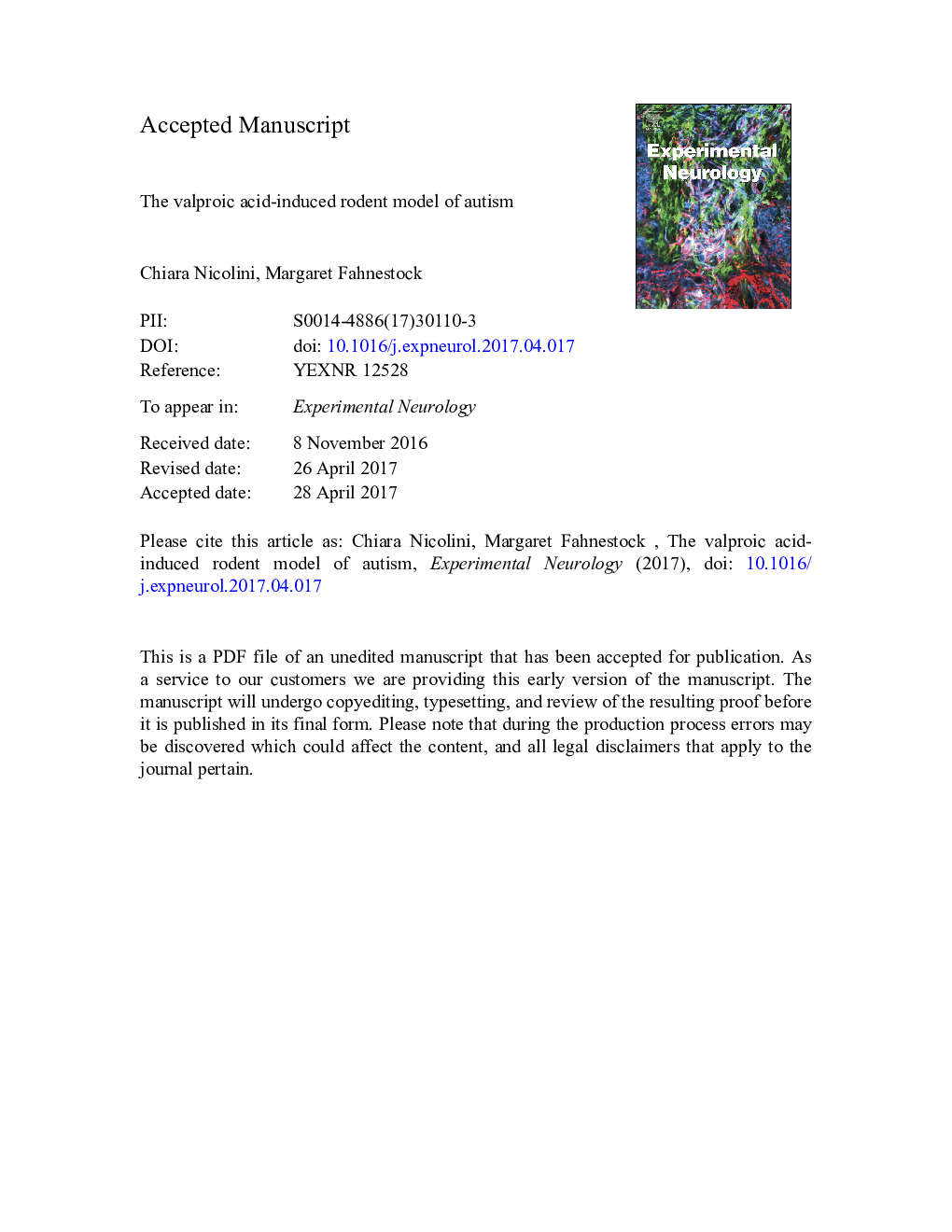| Article ID | Journal | Published Year | Pages | File Type |
|---|---|---|---|---|
| 8684785 | Experimental Neurology | 2018 | 48 Pages |
Abstract
Autism is a lifelong neurodevelopmental disorder characterized by impairments in social communication and interaction and by repetitive patterns of behavior, interests and activities. While autism has a strong genetic component, environmental factors including toxins, pesticides, infection and drugs are known to confer autism susceptibility, likely by inducing epigenetic changes. In particular, exposure to valproic acid (VPA) during pregnancy has been demonstrated to increase the risk of autism in children. Furthermore, rodents prenatally exposed to this drug display behavioral phenotypes characteristics of the human condition. Indeed, in utero exposure of rodents to VPA represents a robust model of autism exhibiting face, construct and predictive validity. This model might better represent the many cases of idiopathic autism which are of environmental/epigenetic origins than do transgenic models carrying mutations in single autism-associated genes. The VPA model provides a valuable tool to investigate the neurobiology underlying autistic behavior and to screen for novel therapeutics. Here we review the VPA-induced rodent model of autism, highlighting its importance and reliability as an environmentally-induced animal model of autism.
Keywords
Related Topics
Life Sciences
Neuroscience
Neurology
Authors
Chiara Nicolini, Margaret Fahnestock,
